New products at Crocus
by Sarah - June 16th, 2009.Filed under: Crocus, New Products.
New lines at Crocus
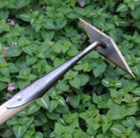
de-wit-diamond-hoe £39.99
This unique push / pull diamond hoe features 4 very sharp forged edges and a slanted P-grip design handle for optimal pushing and pulling while cutting weeds just below the soil surface. The long 1.6 meter hand helps prevent back strain.Special feature. Lock nut fitted to tool head for tightening handleand head during natural wood shrinkage. This keeps a solid feelover the lifetime of the tool.The Dutch are rightly regarded as makers of the finest gardening tools. The two best are Sneeboer and de Wit. Sneeboer were founded in 1913, but De Wit dates back to1898. The 4th generation of De Wits now run the business; one is a trained wood turner, the other trained as a blacksmith. Both Sneeboer and De Wit use traditional techniques, but different materials. Sneeboer use stainless steel and de Wit use carbon steel. Carbon Steel is naturally tougher than Stainless steel and is not prone to metal fatigue like Stainless Steel.De Wit burnish their steel. This not only helps to protect it for longer but gives it a patina that blackens it – just like traditional English tools from the Edwardian era.All De Wit tools have turned hardwood handles of oiled Ash. Ash is not only very strong but resists shock better than woods like oak or beech, which is why it is always used for Axe handles.The result is a beautiful tool to hold in the hand but rugged and durable.They feel so natural to use that they are like an extension of theperson that uses them. These tools will give you a lifetime of use, until you hand them on.SizeHead: 5cm long x 21cm wide ( 2.1 x 8)Total Length: 160 cm long (63)
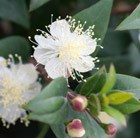
myrtle £8.99
Position: full sunSoil: fertile, moist, well-drained soilRate of growth: average Flowering period: July to AugustHardiness: frost hardy (needs winter protection)This small-leaved myrtle has deliciously scented, large, pink-tinted cream flowers in summer offset beautifully by glossy, dark green leaves. The flowers are followed, in autumn, by white berries. More compact and rounded than the species plant, it is a great choice for a sheltered, sunny spot in the garden.Garden care: Protect from cold, drying winds. Apply a 5-7cm (2-3in) mulch of well-rotted garden compost or manure around the base of the plant in early spring. Remove any unwanted growth in late spring.5 lt Half Standard – this has been trained into a half standard shape with a clear, straight 60cm stem and a 30cm rounded ball of foliage on top, and comes in a 5 Ltr pot. This can be kept in a cool conservatory during winter and moved outside to a sunny patio during the warmer months.
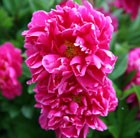
paeony / peony £7.99
Position: full sun or partial shadeSoil: fertile, moisture-retentive yet well-drainedRate of growth: averageFlowering period: June to JulyHardiness: fully hardyPrized for their blowsy, glamorous blooms and glossy, deeply cut foliage, peonies are held in deep affection by many gardeners, despite their shortish flowering season and vulnerability to peony wilt in damp weather. It's easy to see why. From the promise of early spring, when their red, mottled shoots push through bare earth and the handsome foliage unfurls from spherical red buds, to early summer, when the huge flowers burst open, peonies exert a fascination that few can resist. 'Karl Rosenfield' has fragrant double flowers of startling magenta, from early to mid summer among deeply cut mid green leaves. The reddish-bronze foliage of this striking peony provides interest from early spring and after the plant has flowered. Garden care: Deadhead after flowering. In early spring apply a top dressing of a balanced, slow release fertiliser around the base of the plant and mulch with well-rotted compost or manure. If the plant shows signs of collapse or the leaves become spotty, this may be a symptom of peony botrytis. Remove affected leaves immediately. In the autumn, cut off all the foliage and dispose of it to prevent reinfection the following spring.
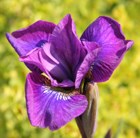
Siberian iris £7.49
Position: full sun or partial shadeSoil: well-drained, moderately fertile soilRate of growth: average Flowering period: May and June Flower colour: violetOther features: all parts of the plant may cause severe discomfort if ingested; contact with the sap may cause skin irritationHardiness: fully hardyBeautifully elegant and highly sought after, Siberian iris are invaluable for creating vertical interest to a mixed border. They also look brilliant when planted near ponds, where their upright habit contrasts perfectly with the flat expanse of water. These super-sized plants (they come in 5lt pot) are large enough to create immediate impact, so are perfect if patience is not your strong point.Garden care: Plant shallowly with the upper part of the rhizome sitting on the surface of the soil, incorporating a low-nitrogen fertiliser in the planting hole. After planting remove the upper-most third of the leaves to minimise the incidence of wind rock. In exposed areas stake with bamboo canes in early spring.
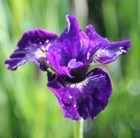
Siberian iris £7.49
Position: full sun or partial shadeSoil: well-drained, moderately fertile soilRate of growth: average Flowering period: May and June Flower colour: dark purpleOther features: all parts of the plant may cause severe discomfort if ingested; contact with the sap may cause skin irritationHardiness: fully hardy This is a large flowered form of Siberian iris, which has dark purple, velvety petals with white veining at the base. Iris are universally loved by gardeners as they are incredibly elegant yet versatile. Try blending this larger sized plant (it comes in a 5lt pot), with deep plum and purple tones to pack a powerful punch of colour. Alternatively you can tone them down with paler shades of blue or lilac.Garden care: Plant shallowly with the upper part of the rhizome sitting on the surface of the soil, incorporating a low-nitrogen fertiliser in the planting hole. After planting remove the upper-most third of the leaves to minimise the incidence of wind rock. In exposed areas stake with bamboo canes in early spring.
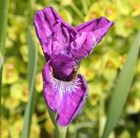
Siberian iris £7.49
Position: full sun or partial shadeSoil: well-drained, moderately fertile soilRate of growth: average Flowering period: May and June Flower colour: lilac-blueOther features: all parts of the plant may cause severe discomfort if ingested; contact with the sap may cause skin irritationHardiness: fully hardyLilac-blue petals with darker veining and a creamy-white base make up the flowers of this delightful Siberian iris. This is one of our super-sized Iris, which comes in a 5lt pot, which will create an impact almost immediately. Plant in bold swathes throughout the border, where its upright form will add vertical interest in early summer.Garden care: Plant shallowly with the upper part of the rhizome sitting on the surface of the soil, incorporating a low-nitrogen fertiliser in the planting hole. After planting remove the upper-most third of the leaves to minimise the incidence of wind rock. In exposed areas stake with bamboo canes in early spring.
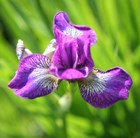
Siberian iris £7.49
Position: full sun or partial shadeSoil: well-drained, moderately fertile soilRate of growth: average Flowering period: May and June Flower colour: lilac-pinkOther features: all parts of the plant may cause severe discomfort if ingested; contact with the sap may cause skin irritationHardiness: fully hardy The petals of this pretty cultivar are lilac-pink with a veined, white base. They appear in early summer on upright stems, which emerge from amongst the sword-shaped foliage. Try planting with other early summer flowers, such as Alliums, Centranthus or Geraniums. This is one of our larger sized iris (it comes in 5lt pot), that is substantial enough to create and impact without burning a hole in your pocket.Garden care: Plant shallowly with the upper part of the rhizome sitting on the surface of the soil, incorporating a low-nitrogen fertiliser in the planting hole. After planting remove the upper-most third of the leaves to minimise the incidence of wind rock. In exposed areas stake with bamboo canes in early spring.
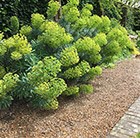
spurge £5.99
Position: full sunSoil: light, well-drained garden soilRate of growth: fast growing Flowering period: March to MayHardiness: fully hardyThis handsome euphorbia has upright stems clothed with whorls of fleshy, glaucous leaves and topped with huge heads of chartreuse-green flowers with bronze 'eyes' from March to May. The Edwardian garden designer Gertrude Jekyll described this sun-loving, evergreen shrub as 'one of the grandest of plants'. Euphorbia characias originates from the Mediterranean, where it is found on dry rocky slopes and scrubland, so it is very tolerant of drought once it becomes established. It forms a natural rounded shape, and brings structure and an architectural quality to the garden. A tall mainstay of the traditional herbaceous border, it's equally at home in a contemporary minimalist or gravel garden. It may self-seed, but plants rarely come true from seed.Garden care: To promote new shoots remove flower heads in spring after they have flowered. When working with spurges always wear gloves since the milky sap is poisonous and a potential skin irritant. Remove seedlings as they appear.
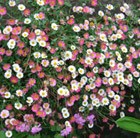
Mexican fleabane £5.99
Position: full sunSoil: fertile, well-drained soilRate of Growth: averageFlowering period: June to OctoberHardiness: fully hardyMasses of small daisies, emerging white, then turning pink, with yellow centres, give this plant an unusual, two-tone effect. It has a long flowering period, from May to October, and is amazingly versatile, being low-growing, happy in sun or partial shade and thriving in any well-drained soil. It's also tolerant of coastal conditions. Try it as an edging plant in a mixed border, alongside paths, in a gravel garden, spilling over walls, or planted in the cracks in paving. Bees and butterflies love all erigerons, so they make a wonderful addition to a wildlife garden, too. Garden care: Trouble free. Cut back the flowered stems to ground level in early spring. Lift and divide large clumps every second or third year, discarding the woody crowns.
snapdragon £4.99
spider flower £3.99






